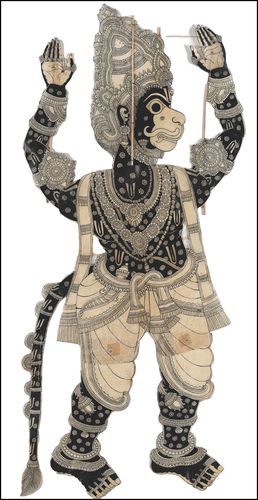What do you do when you have amassed enough wealth and a lot of art? You share it with the world. Joining a growing league of India’s privately-owned and -funded museums is Sarmaya, in Mumbai’s bustling Fort area. The 3,600 sq.ft gallery was opened by Paul Abraham and his wife Pavitra Rajaram.
Sarmaya―which has just mounted its first exhibition, High Seas, Open Roads: Journeys that bring us home―has long been a digital space and a physical archive in Dadar. But the couple sought a physical space to share the private collection with the world. It opened quietly last November with a launch of good friend Manu S. Pillai’s new book, Gods, Guns and Missionaries.
“We had earlier presented some collections at Tarq, Pundole’s, and the JANF for Kalaghoda,” says Abraham, the 64-year-old former COO of IndusInd Bank and current president of the Hinduja Foundation. “But we eventually wanted something front-facing.” The 2018 exhibition at Pundole, ‘Portrait of a Nation’, marked the debut of Sarmaya, with a collection of sepia-tinted photographs from the 19th century, which included one of the earliest photos ever to be taken in India, on the mutiny of 1857 by Felice Beato.

According to Abraham, collecting is a journey, which is why this is the theme of the opening exhibition. “Journeys are not always literal, you can make what you want of them,” he says. The exhibition traces the journey of ‘Bombay’. The artefacts are diverse: A charred wood panel with the burnt bits depicting the city on Google Maps. An old painting of Bombay by Robert Grindlay, who founded the famous Grindlays Bank. Indian coins from several dynasties, including that of Muhammed Shah Rangila, a Mughal emperor defeated by Nadir Shah from Persia, now buried at Delhi’s Hazrat Nizamuddin Aulia Dargah. A photo of the old Watson’s hotel, with just a field where Kalaghoda now stands. “Rumour has it that this is where J.N. Tata was not let in, and this led him to build the Taj Mahal hotel nearby,” says Abraham.
Then there is a series on those who journey into the unknown. For example, ‘Pale Blue Dot’ is a painting of the earth by Jethro Buck, a Britisher who trained in Jaipur. It is to be viewed while listening to a recording of American astronomer Carl Sagan describing the planet from space. Annelie Solis is an artist from Trinidad and Tobago who has painted the constellations in the miniature style. A Jain version of the cosmos hangs on a vegetable-dyed textile. In one corner is Emperor Jahangir’s collection of zodiac coins.
There is a giant puppet of Vishwaroopa Hanuman, a mascot of Sarmaya. This is a work from the leather puppet tradition of Andhra Pradesh, which travelled from Maharashtra to Andhra Pradesh, Karnataka, Tamil Nadu, Kerala and Odisha. In different states, it has different names; in Telugu it is ‘Tholu Bommalata’ or ‘the dance of the leather dolls’.
A red cord installation by London-based Bengali artist Sayan Chanda evokes the snake goddess Manasa, the subject of a traditional tale of the northeast, about Muslim travellers using Hindu names. Barcelona-based Rithika Merchant depicts illegal migrants from Africa who die upon reaching the shores of her city, with an electronic counter numbering the deaths even as the locals sunbathe.
All the artists here are born in one place and live in another, many inspired by a third. Closing borders and changing identities is a leitmotif, especially prescient in the time of President Donald Trump.
Sarmaya means “collective wealth”. “Both Devanagari and Urdu claim ownership of the word,” says Abraham. Along with a smattering of Indian languages, Abraham also reads and writes in Urdu, taught by his Urdu teacher, the late Mirza Hifazat Baig.
The current museum is an expansive space in the 150-year-old Lawrence & Mayo building. Rajaram, who heads Pavitra Rajaram Design Studio and is also design director at Asian Paints, discovered it when the couple had nearly closed the deal on another space, but were enchanted by the scale and bare bones of this one. “It was filled with pigeons, and I fell in love,” laughs Rajaram, 56. She has kept the original ceiling and modernised the rest of the space to rival that of any international gallery. A wall of books, housing 9,000 of Abraham’s 15,000 books, stands in one corner. Independent installations dot the room. A large beaten brass installation runs along the ceiling, outlining India’s coast lines from Gujarat to Bengal.
Abraham, who has been collecting for 40 years, says, “My father moved from Kerala to Delhi in 1948. When I was a teenager, he gave me a small bottle filled with 10 antique coins from Travancore as a reminder of our Malayali heritage.” The coins piqued his curiosity, and he became an enthusiast. The bottle is placed at the centre of one of the rooms, with a photograph of his father P.T. Abraham.
The coins led him to research and eventually collect maps, and then engravings. “I found names of mints on coins,” he says. “Then I had to find old maps, because the cities had old names for their municipalities and constituencies. Delhi’s mints, for example, were at Shahjahanabad, Najafgarh, Tilpat and Tughlaqabad. Lucknow’s mint was called Akhtarnagar.” He pulls out a coin of Noor Jehan, the only empress in the Mughal Pantheon to have her name on a coin. “It says Jehangir, Noor Jehan and Zarb, which means Agra,” he reads out in Persian.
Sarmaya’s upcoming exhibitions this year are one on nature and botanicals, and another on miniatures.


